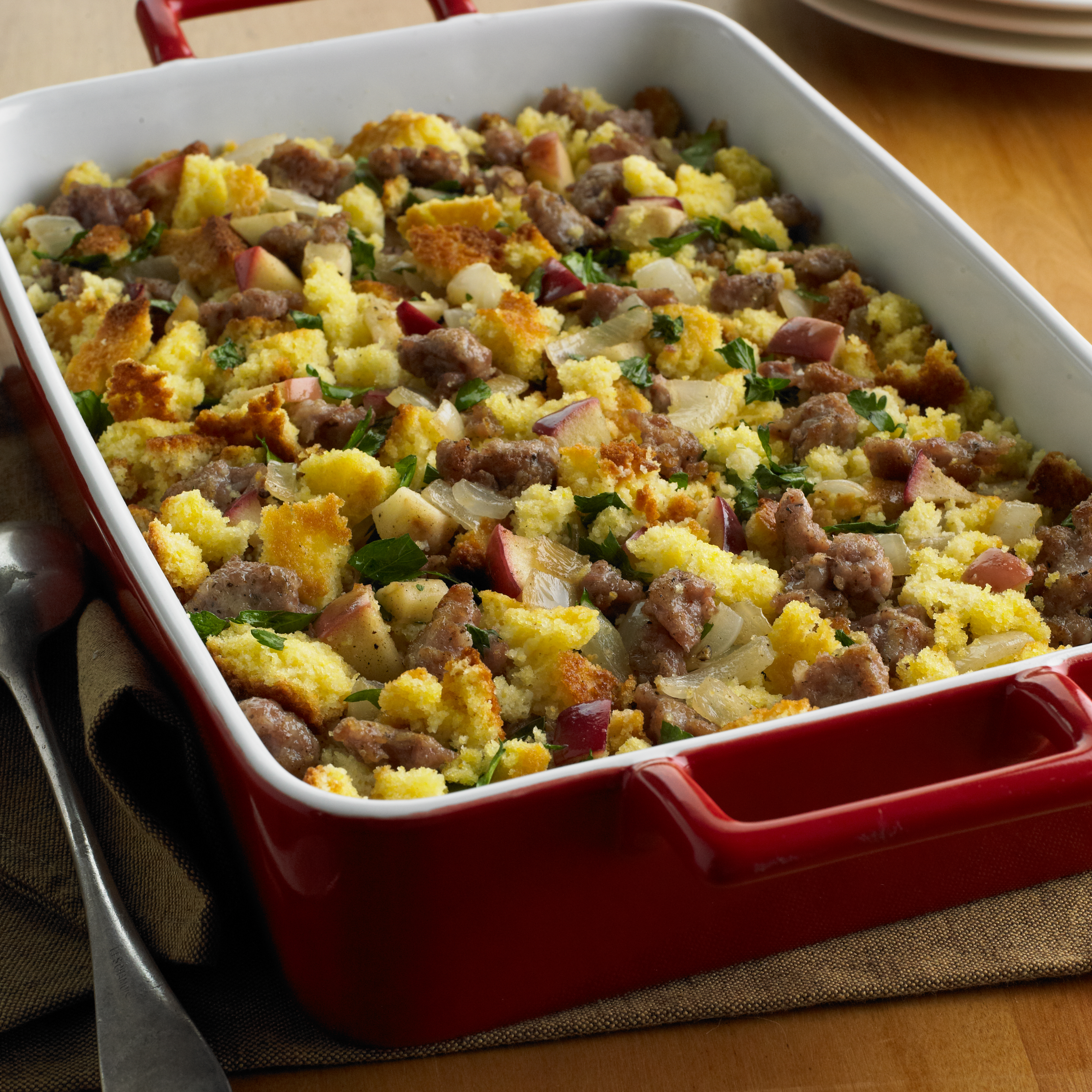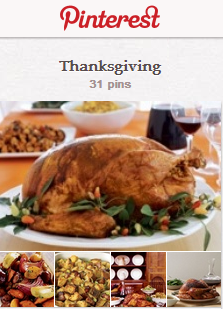Stuffing or dressing. Dressing or stuffing. Did you know that they are exactly the same thing? What differentiates one from the other is what you do with it.
Dressing is most commonly a combination of aromatic vegetables, bread or other starch, herbs, spices, and occasionally meat, sausage, or seafood. Flights of fancy add just about any other type of ingredient.
That same dressing recipe becomes stuffing when you put it inside something else—a turkey, for example. Dressing is cooked separately as a casserole.
Stuffing/dressing is one of those dishes that can, over time, become a very personal matter—a family treasure handed down through generations, your own unique variation, or something inspired by reading through a number of recipes.
Once you get the basics down, making dressing can be as free-form as you want—no exact measurements, just go with the feel, the flavor, and whatever happens to be in your pantry.

Ingredients
Aromatic Vegetables
The vegetable component of your dressing sets the foundation of flavor that builds as the recipe develops and the cooking progresses. Different ethnicities have different combinations of aromatic vegetables—usually a trio—that start many recipes. For example, the French have mire poix: onions, celery, and carrots. Cajuns and Creoles have the “Holy Trinity” of onions, celery, and bell pepper. The Portuguese use onion, garlic, and celery, called sofrito.
Choose your combination of aromatics and saute them in olive or other oil, butter, clarified butter, fat, lard, bacon fat, or duck fat until the vegetables begin to soften. You could, for example, start by rendering some bacon or fresh sausage in the saute or frying pan. Scoop out the sausage or bacon to a bowl, but leave the hot fat in the pan.
Spices and Herbs
Next, add your preferred herb-spice mixture. Decide whether to use fresh or dried herbs. You’ll need about 2 to 3 times the amount of fresh herbs, compared to dried. Parsley, sage, rosemary, and thyme, as the song goes, are hallmark herbal flavors, particularly for a traditional Thanksgiving rendition. Use all or any combination.
Add the herbs and spices to the aromatics as they saute to release their flavors.
Starch
The starch in dressing is what binds it together and absorbs all of the wonderful flavors. Most commonly, bread is the choice. Different breads will define the dressing’s final texture and flavor. For example, sourdough, rye, whole-grain, or corn bread will each lend its own unique character and density.
Just make sure that you use day-old bread, rather than fresh because it is too soft and will become mushy. If all you have is fresh bread, put slices on a cookie sheet and leave on your counter or in an unheated oven for a few hours, or overnight, to dry out a bit.
Rice, cous cous, or various grains such as quinoa can be the base you need. In most cases, it is best to undercook the starch or grain slightly to compensate for the time it will spend in the oven.
Meats and Other Additions
Except for rendering, it’s best to cook any fresh meats or seafood separately and then add them at the very end. Be sure to heat thoroughly.
Such firm, fresh fruits as apples and pears add a burst of moisture and flavor to any dressing. And just about any type of dried fruit can be added. They plump and soften as they absorb moisture from the mix. Raisins, currants, and apricots are especially tasty.
Nuts, including almonds, walnuts, and cashews, add considerable flavor and a nicely contrasting crunchy texture to a dressing.
Moisture
After everything else has come together, the last step is to add some moisture to the dressing or stuffing. The liquid can be water, stock, or a combination. If you are stuffing something, use slightly less liquid to compensate for the moisture it will absorb from the turkey or whatever the stuffing goes into.
Stuffing Safety
A few health and safety tips are of paramount importance when making stuffing.
- Do not stuff the turkey, or whatever, until it is ready to be put into the oven.
- Do not stuff the turkey and then leave it on the counter or put it in the refrigerator.
- As soon as the turkey comes out of the oven, remove all of the stuffing to a serving dish.
- Never stuff a turkey and is to be smoked, grilled-roasted, or deep-fried.
Recipes
If you’d prefer to take a well-beaten path to a delicious dressing/stuffing, we have a number of recipes that will fit the bill.
Try our recipe for Apricot-Cranberry Bratwurst Stuffing made with our artisanal, hand-made, seasonal sausages.
Giblet Stuffing is a traditional favorite.
For a crunchier option, try Chestnut and Brazil Nut Stuffing.
Our Fruit Stuffing pairs perfectly with a Crown Roast of Pork or as a dressing for a roast pork loin. Try it with turkey or chicken as well.
Wild Rice Stuffing complements a lamb very nicely, but would also be tasty as turkey stuffing.
For additional inspiration, check out our Thanksgiving board on Pinterest, which includes lots of unique stuffing and dressing ideas.
What do you call it, dressing or stuffing? What’s ingredients are included in your favorite stuffing? Do you stuff it in the bird, or cook it on the side—or a little of each? What’s the oddest stuffing ingredient you’ve ever had?




Leave Your Response